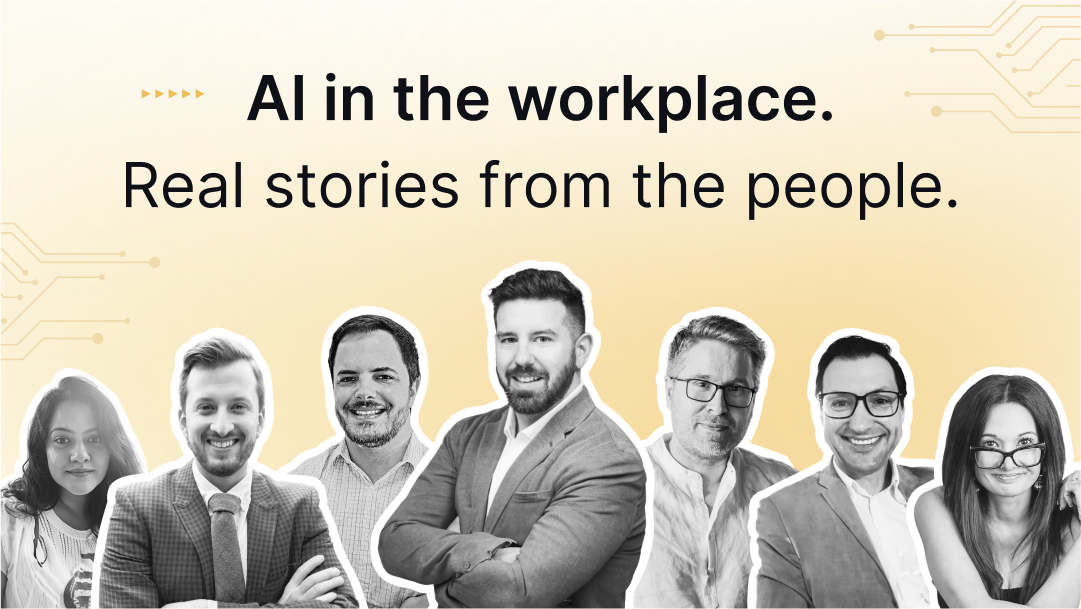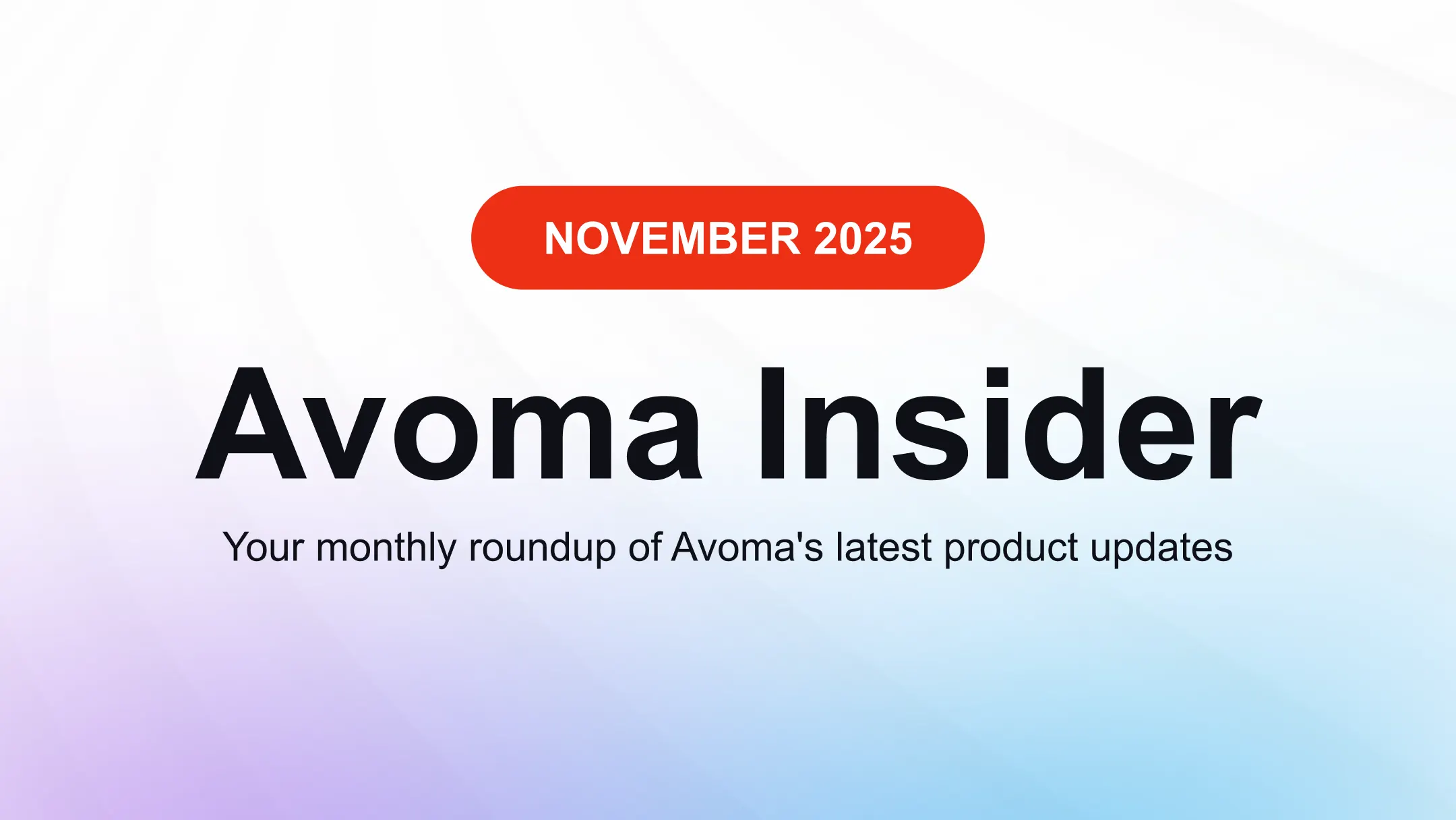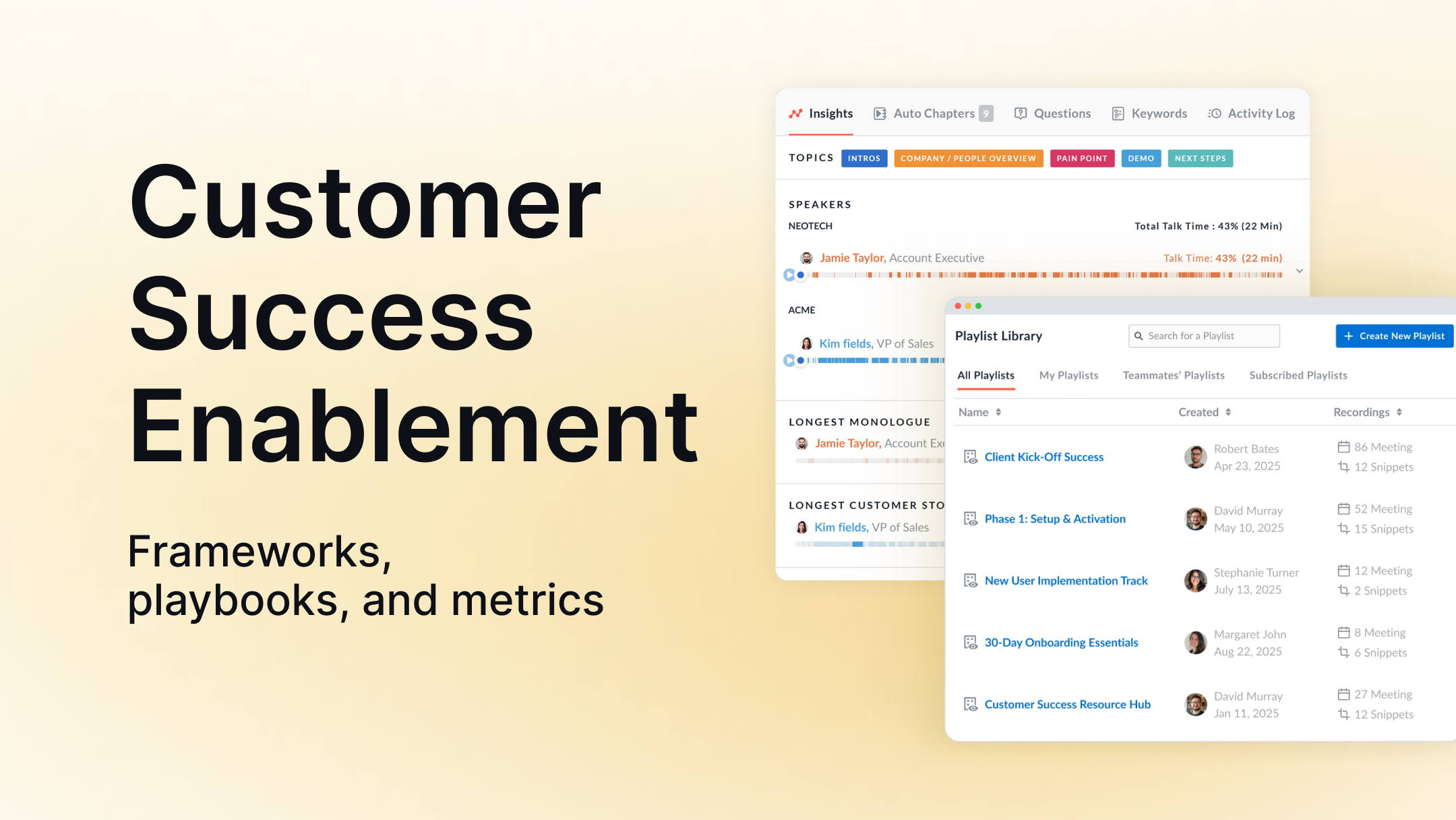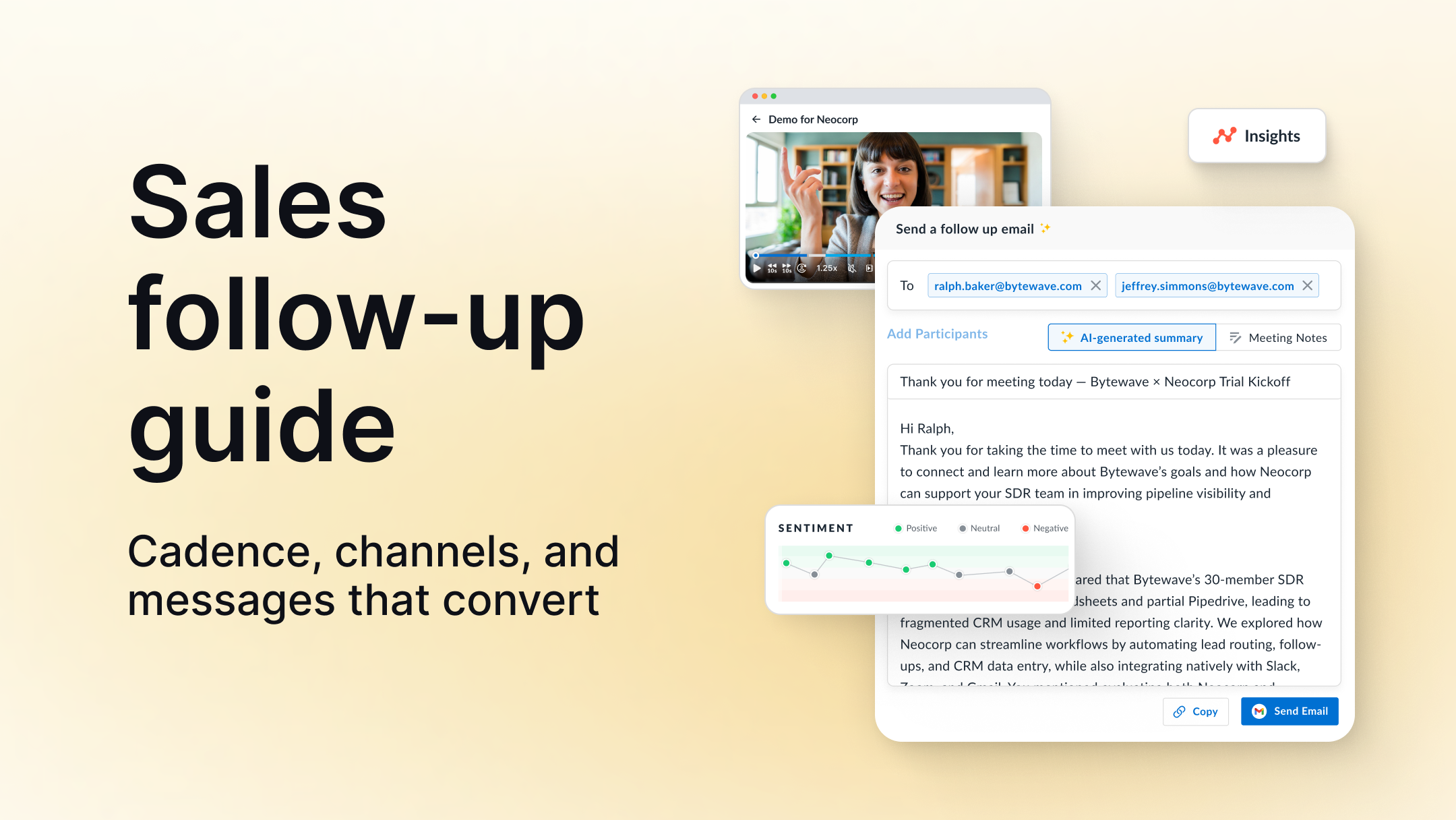How AI in the workplace made work feel Human again. Real stories from the people
Table of Contents:

The biggest shift AI made this year wasn’t just about automation. It was about attention.
AI adoption meant higher productivity, less data entry, and better time spent. Teams stopped chasing admin work and started spotting deal risk. Notes wrote themselves. Decks got smarter. Strategy moved with the pace of sales.
Much of this progress stems from machine learning models that continuously adapt to user behavior and needs. From generative AI summarizing calls to predicting objections, the tools are learning how we work and helping us do it better.
We wanted to capture that shift, not from the lens of product, but from the people living it.
So for AI Appreciation Day, we asked the AI users: What’s different now?
Their answers were short, sharp, and dead honest. Just the stuff that changed.
Watch the full video: How AI Changed Our Work
Hear directly from the leaders featured in this article.
AI in the workplace replaced the grunt work. That’s not the win
One of the biggest visible impacts? Fewer repetitive tasks bogging down teams. But let’s stop pretending the big unlock is saving time.
Yes, Artificial Intelligence crushed the grunt work. CRM updates, call summaries, follow-ups, prepping decks, everything is gone. But the real shift? It cleared space to think.
Liam Martin (Co-founder, Time Doctor) put it plainly:
"Most of the stuff we used to call work, AI handles it now... and when it did, I realized I didn’t actually have anything else to do."
That’s the uncomfortable part no one likes to admit. When AI takes the low-value work off your plate, you're forced to confront how much of your day was noise.
Michael Carden (Mid-market AE, Avoma) used to spend hours each week cleaning up his CRM. Now? It just happens behind the scenes.
For others, it’s about presence. Naseem Rochette (Author and Sales executive, Databricks) said it best:
"I’ve always been terrible at taking notes. Now I can stay fully in the moment with my clients and someone else writes everything down."
This isn’t about productivity hacks or faster workflows. It’s about cognitive freedom, the ability to focus without dragging a to-do list behind you. And once you get that back, there’s no unseeing it.
Every rep now has a personal coach
It used to take a manager, a pipeline review, and a spreadsheet to get feedback. Now, reps are getting nudges mid-flight.
That’s a shift in culture.
Rohan Wagh (Sr. CSM, Avoma) calls AI his "on-demand coach." It tells him where he’s landing, where he’s losing deals, and what to tweak, without needing a formal 1:1.
David Canuto (AE, Time Doctor) sees it the same way.
"AI takes notes for me, helps me coach myself, gives me new ideas. It’s like a super smart assistant that never complains."
The old model relied on chance. Managers had limited time, so they listened to whatever calls they could fit in. Feedback came late, or not at all. And critical moments can easily get missed.
Today, AI analyzes every conversation in real time, flags coaching moments as they happen, and filters the noise. Instead of hoping to find the right calls, managers are guided straight to them.
Dave Williams (VP Sales, Avoma) used to spend hours digging through deal data to figure out what was stuck. Now?
"I spend less than five minutes understanding what’s happening in 15 to 20 deals."
This isn’t replacing managers. It’s making coaching continuous and making reps better, faster.
AI makes insights immediate, actionable, and shared
In most orgs, strategy used to lag behind reality.
Teams would catch up in quarterly reviews. Leaders would get deal intel secondhand. Even when churn or expansion signals show up, they are often overlooked, clouded by bias, uncertainty, or inconsistent notes.
Now, AI spots churn and expansion signals right away, so teams don’t miss these important alerts.
Akshay Nahar (Manager CS, Avoma) summed it up clearly:
"If AI disappeared tomorrow, I’d feel handicapped. Everything from follow-up emails to surfacing churn risk, it's all handled for us now."
What used to be manager-only insights are now in every rep’s inbox. Missed a buying signal? It’s flagged. Slippage in deal velocity? It’s identified. Cross-sell opportunity? It's clipped and timestamped.
Michael Carden doesn’t even think about CRM hygiene anymore. AI writes it for him.
Dave Williams used to manually scan 20 deals before pipeline meetings. Now, a couple of prompts give him the full picture, down to who said what and why it matters.
This isn’t just time saved. It’s the death of reactive GTM. Strategy is now synced to the actual work, not delayed by it.
From hours of Googling to instant briefs
You know that moment when you’ve spent hours on Google sifting through several articles and still haven’t found anything useful?
That’s the new normal for anyone using AI as their research sidekick.
Erin Hartje (Director of Marketing, Avoma) put it bluntly:
"I don’t think I’ve been on Google in months."
Instead of hopping between tabs, parsing messy search results, and wrangling half-baked sources, she drops a prompt, context, intent, and expectations baked in, and gets exactly what she needs.
Campaign brief? Done. Competitive breakdown? Sourced and summarized. Need proof for a slide deck? AI already pulled the quote.
It’s also a sign of how AI in the workplace has evolved from novelty to everyday necessity.
When the right answer shows up first, work moves.
Thanks to advances in natural language understanding, tools are now better than ever at translating vague ideas into sharp deliverables, even from a simple prompt.
And when your team stops wasting hours looking for signal in the noise, they spend more time using what they find.
As Liam Martin puts it,
"If you’re not using AI to remove the noise, you’re not managing performance, you’re managing distractions. And that’s something every team needs to recognize."
AI isn’t a feature, it’s how you scale
Most companies talk about AI like it’s a plugin. At HANDLE® Global, it’s baked into the operating system.
David Newton (SVP, HANDLE® Global) isn’t chasing marginal gains. He’s using AI to fundamentally restructure how hospitals source critical equipment faster, cheaper, and smarter.
"Tools like Avoma and Perplexity have changed how we operate… from automating GTM functions to flushing out product concepts."
This isn’t a hypothetical scale. It’s measurable.
“AI has helped us 10x our workforce and drive more savings for all of our hospital customers.”
The impact isn’t tucked into a static dashboard. It shows up in fewer delays, better decisions, and real dollars saved across high-stakes systems.
That’s what happens when you stop treating AI like a product feature and start using it as a multiplier across every function.
Ops. Product. Sales. Strategy. AI’s not just supporting growth, it’s compounding it.
The hidden benefit: Focus over hustle
For all the talk about AI optimizing workflows and boosting productivity, this is what stuck with us most:
People feel more present.
Naseem Rochette said it simply:
"I’ve always been terrible at taking notes. Now I can just focus on my clients. Someone else is writing it all down and I don’t miss a thing."
It’s easy to forget that time saved isn’t just about output. It’s about attention. About ending your day with a little more clarity, a little less context-switching, and maybe even a bit of headspace left.
Harrison Sloan (Enterprise AE, NowSecure) called out his favorite AI win of the year:
"Avoma’s note taker. It helps me plug the right outcomes into customer proposals, fast."
This is the deeper benefit of AI in the workplace, not just automation, but a human-centered focus.
Beyond automating tasks, AI is helping professionals reclaim their mental energy. With fewer distractions and less context-switching, people are finding space to focus on what moves the needle.
As Khushboo Bhatia (AE, Avoma), puts it:
“AI has freed up so much brain space, I’m not stuck taking notes, I’m closing faster, and I finally feel in control.”
The throughline? People aren’t asking AI to do their jobs. They’re asking it to take the edge off and do more. To handle the repetition so they can stay sharp where it counts.
And that’s the version of AI we’ll bet on. Quiet, consistent, and pointed at the real work.
After AI, nothing about work feels the same
The most valuable thing AI gave us this year wasn’t speed.
It was space.
Space to focus. To think. To actually do the work we’re hired to do without chasing tasks that should’ve been automated years ago.
The teams we talked to aren’t using AI because it’s trendy. They’re using it because it makes them sharper. Faster. More focused.
That’s worth celebrating.
Frequently Asked Questions






What's stopping you from turning every conversation into actionable insights?









